When you want to learn to play the piano, it can be daunting to look at all those black and white keys on the keyboard.
How do people navigate around the many keys? How do you keep from getting lost?
Without oversimplifying the piano keyboard, there is a pretty straightforward structure in the anatomy of the piano keyboard.
This article aims to unravel the mystery so you can get familiar with the piano keyboard layout and anatomy.
Words Of Encouragement
Mastering the piano is not easy, it is a lifelong pursuit. It is, however, a lot of fun to play the piano. Heck, it is a lot of fun to play any instrument!
The piano is considered to be among the most challenging instruments to master. I think the biggest reason for this is that the piano is pretty much a full band, wrapped up in one instrument. In a single musical piece, one can be playing a bass line, the chord accompaniment, and the melody; all at the same time!
That being said I also want to point out that “despite” being difficult to master, the piano has a low threshold to start learning.
- You don’t need to play complicated songs to start having fun.
- The keyboard layout is crystal clear when compared to a lot of other instruments.
- Since the development of excellent sounding digital pianos, it has become quite affordable too.
Point number 1 I think is quite obvious, but point number 2 I want to elaborate on a little bit.
It takes a lot of time on some instruments to learn where all the notes are.
For instance, the guitar is probably the most popular instrument out there. It takes a lot of time to learn the fretboard of a guitar. Believe it or not, but fretboard training is a big deal for guitarists. Similar instruments like the violin, the cello, even the banjo fall into the same category.
Instruments like the trumpet, as another example, take a very long time to learn the notes. It is a combination of tension in the lips and the position of the three valves on top. There is almost no visual foothold to help remember all the notes.
– One of my mentors once told me that the white handkerchief was not only used for wiping off sweat during a performance. Allegedly it had a double role to hide the positions of the valves. There was a lot of competition among jazz musicians in those days – I have yet to confirm this theory though.
A piano keyboard is in that regard straightforward. All notes are easily accessible, and they are laid out in a very distinctive pattern that is easy to learn!
Let’s get to work!
General Keyboard Specifics
Number of keys
A piano has 88 keys:
- 52 white keys
- 36 black keys
Black Keys Are The Visual Reference
If it wasn’t for the black keys, we would get lost on the piano keyboard; they form the landmarks in our landscape.
The black keys form a pattern: groups of two and three keys. This pattern will be your guiding light!

Notice that the very first black key doesn’t appear to be part of any group. The group of three that we would expect there was cut off at the end of the piano.
Naming The Notes
Some Background On Note Naming
There are a few different schools when it comes to notes and note names. I don’t want to confuse things too much for you since you are just starting, so I will try not to go too deep into the theory.
The term that is used traditionally for the study of pitch and sight-reading is the word: solfège.
Traditional Solfège names the notes with the well-known syllables: Do – Re – Mi – Fa – Sol – La – Ti(Si)
This sequence of notes is the most natural scale in western society. From a very young age, this is spoon-fed in the form of lullabies and children’s songs.
In modern times, these syllables were for the most part replaced by letters from the alphabet.
| Do | Re | Mi | Fa | Sol | La | Ti(Si) |
| C | D | E | F | G | A | B |
This was probably done to save space on sheet music in the chord names. In old books, you would find chords written like SolMaj7. I think you will agree that GMaj7 saves a lot of space.
The order of the letters might be a bit unfortunate; why didn’t they start it on an A?
Well, I don’t have a well-founded explanation for that… I could say that maybe they matched up the F with Fa because of the first letter. I don’t know if that is the real reason. Maybe they just started from left to right on the piano keyboard since coincidentally the first key on the piano is an A?
What I am trying to get at, is that even though it is counter-intuitive, we should look at C as our note of reference since that is the first note of the natural major scale that most people in western society have experienced:
C – D – E – F – G – A – B
If you are hungry for more info about the major scale, check out my tutorial about the major scale.
Locating The Notes On The Keyboard
You will see some music notation down below, you don’t need to be able to read or understand that in any way yet. There will be a tutorial about the basics of reading sheet music and music notation soon.
C
To locate a C on the piano:
- Find a group of two black keys.
- The C is located on the white key directly on the left of that group.

This simple trick gives you the ability to locate any C on the piano keyboard! Check it out!
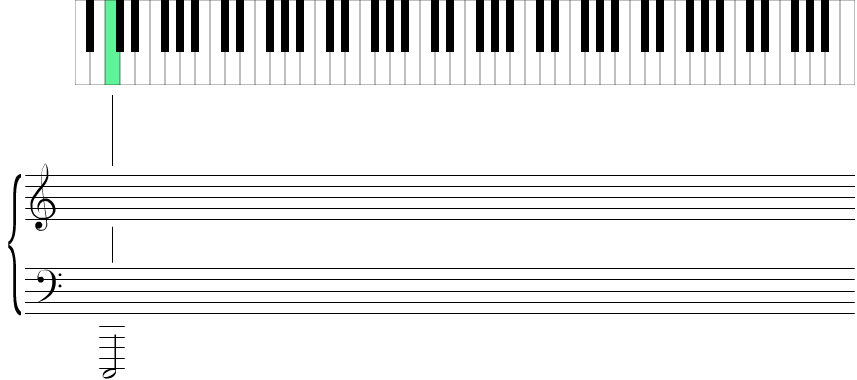
D
To locate a D on the piano:
- Find a group of two black keys.
- The D is the white key right in the middle of that group.

This simple trick gives you the ability to locate any D on the piano keyboard! Check it out!
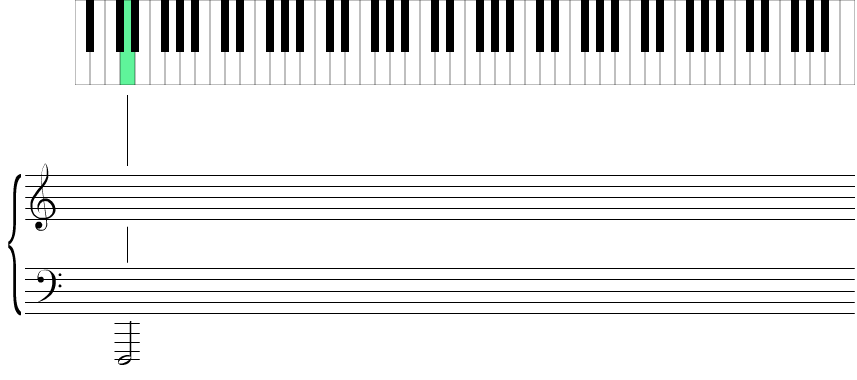
E
To locate an E on the piano:
- Find a group of two black keys.
- The E is the white key directly on the right of that group.

This simple trick gives you the ability to locate any E on the piano keyboard! Check it out!
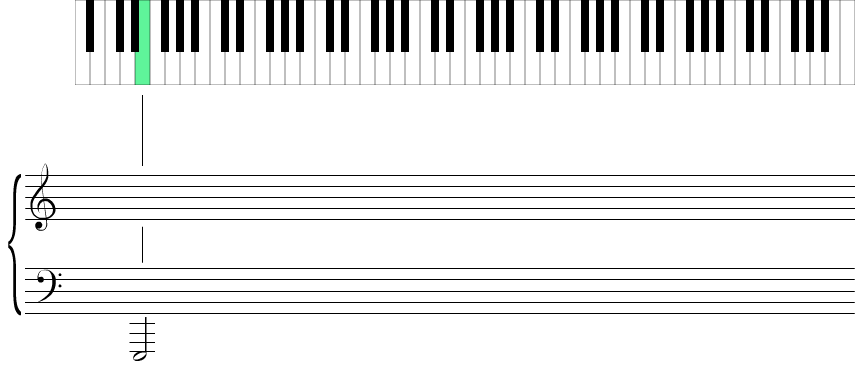
F
To locate an F on the piano:
- Find a group of three black keys.
- The F is the white key directly on the left of that group.

This simple trick gives you the ability to locate any F on the piano keyboard! Check it out!
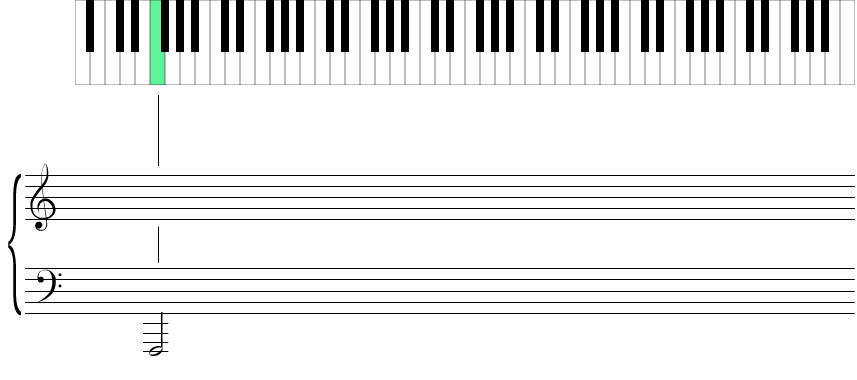
G
To locate a G on the piano:
- Find a group of three black keys.
- The G is the white key between the first two black keys in that group.

This simple trick gives you the ability to locate any G on the piano keyboard! Check it out!
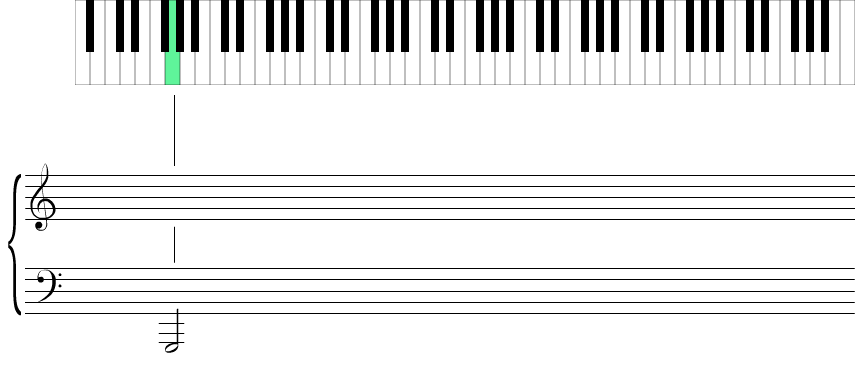
A
To locate an A on the piano:
- Find a group of three black keys.
- The A is the white key between the last two black keys in that group.

This simple trick gives you the ability to locate any A on the piano keyboard! Check it out!
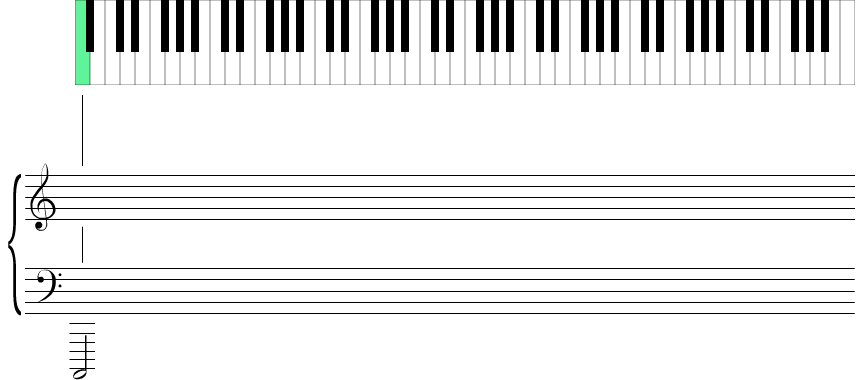
B
To locate a B on the piano:
- Find a group of three black keys.
- The B is the white key directly on the right of that group.

This simple trick gives you the ability to locate any B on the piano keyboard! Check it out!
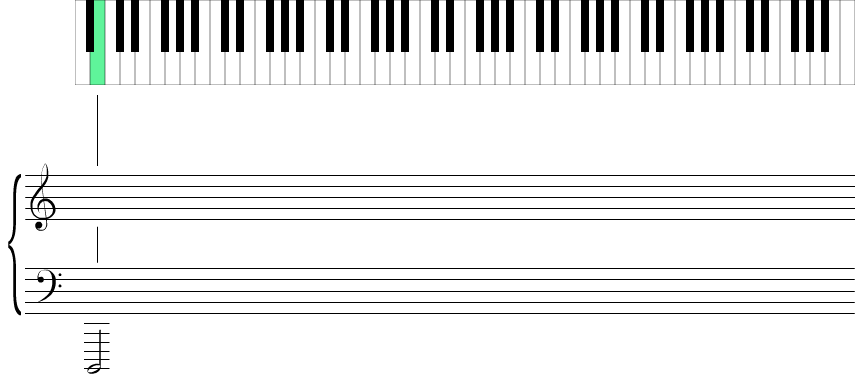
Explaining Sharp and Flat
Within the context of music, sharp means higher in pitch, and flat is the reverse meaning lower in pitch.
To be more exact:
→ Sharp means higher in pitch by one semitone or a half step.
→ Flat means lower in pitch by one semitone or a half step.
The word “sharp” is represented by the symbol: ♯
The word “flat” is represented by the symbol: ♭
On the piano, when pressing the keys from left to right, we go higher in pitch. Vice versa when we play keys from right to left, we go lower in pitch.
→ When we travel from left to right on the keyboard, we call that: going up the keyboard.
→ When we travel from right to left on the keyboard, we call that: going down the keyboard.
Naming The Black Keys
You will have noticed that we only gave the white keys a name thus far, using the grouping of the black keys as a visual reference. Now the time has come to name the black keys.
In music, we only use the letters A, B, C, D, E, F, and G. those are the only letters we use to name notes… So what do we call our black keys?
Well, the black keys get their name from the surrounding white keys. Two white keys surround each black one, and as you will soon find out; each black key has two names because of this.
Knowing the names of the white keys, combined with the little bit of theory about sharps and flats you read higher up, the naming of the black keys becomes very straightforward.
Let’s take as an example the first black key of a group of two keys:
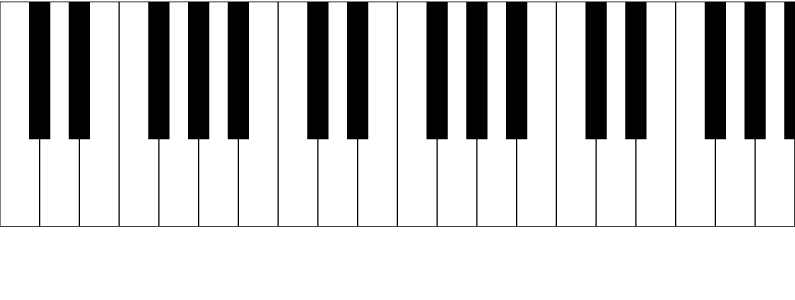
That key is surrounded by the notes C on the left and D on the right.
When we travel from the C to the black key, we go up the keyboard by a semitone. The black key is therefore called C♯(C sharp).
When we travel from the D to the black key, we go down the keyboard by a semitone, and the black key is therefore called D♭(D flat).
It is a little bit out of scope to know why we need two names for each black key, but if you want to look ahead and find out… Check out my tutorial about the major scale under the F major example.
With that you are now able to name all the black keys:

Where to Next?
Hey, you made it! Great job!
Isn’t it cool that you can now identify any key on the piano? It really doesn’t take that much effort now does it?
Now the fun can really start. Getting to learn some easy melodies at first, to discover how chords work and how to start playing beautiful music.
The next step that you could take is to learn about proper posture and how to warm up your shoulders, arms, and finger muscles for practice. Check out my tutorial about Piano Warm-Ups for Absolute Beginners.
You can also start learning about the aspects of the major scale, how it is built, its anatomy. How you can build major keys using different starting notes. Check out my tutorial about the Major Scale in all its glory.
Another option is to start learning scales. You get access to major and minor scales with fingerings, practice advice tips on setting up practice strategies in my tutorial on How to Learn Scales on Piano.
Or if you fancy some basic chord theory to get you started with some of your favorite songs, you can learn about the diatonic sequence in my tutorial about basic chord theory and the diatonic sequence.
I also want to leave you with a bit of a cliffhanger; I am working on a complete trail of tutorials for complete beginners. Complete with video lessons and everything. Subscribe to my newsletter, and I will keep you posted.
For beginners, I can really recommend a great app to get you started with nice exercises and a hands-on approach. Check it out, there is a free version for basics and a paid version for if you want to dig in further.
► https://go.flowkey.com/pianowalk
That’s it for now! Have fun practicing and playing the piano and…
Keep walking the Piano Walk!
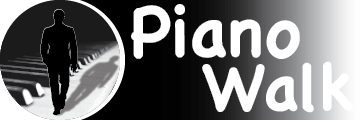
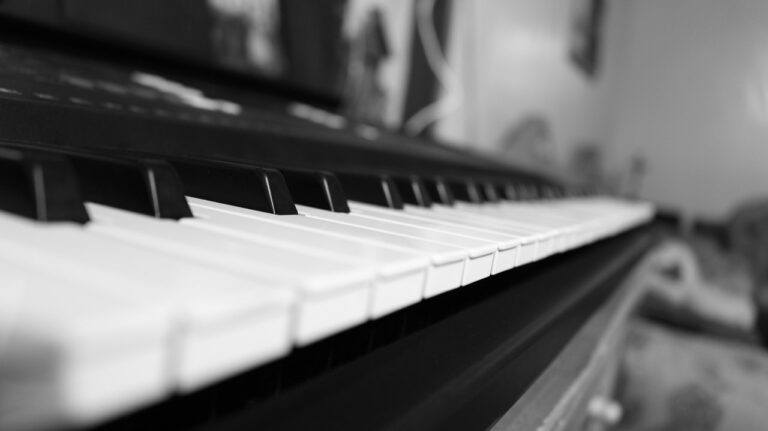
4 Comments
I love this as I always think it must be great to learn the piano but hard and this explains it in simple terms so thanks. I often go to one if I see a piano in a bar to see if I can play but then walk away slightly blushing! I can’t play a note currently. Thanks for sharing. I hope it inspires youngsters who can’t afford one at home to learn as well. It always seemed unfair that music was learned by certain families and not others. Keep up the good work.
Hey Phil,
Thanks for your feedback. Yes not everyone can afford a piano, but luckily with the digital pianos these days one can get something decent for around $300.
It isn’t super cheap I guess, but with a bit of saving it should be doable for most.
I have an article with a buyer’s guide for people who are looking for an affordable piano that is good enough to start with.
https://pianowalk.com/the-definitive-guide-to-buying-the-best-digital-piano-for-beginners/
I’ve always had a keen interest in musical instruments since I was a child. You’ve laid out all the images in your article that are so easy to follow and learn. What a great teacher you are.
Thank you
Thanks for the compliment, Habib!
Glad you enjoyed it and I hope you feel motivated to follow that childhood interest.
Cheers,
Tom